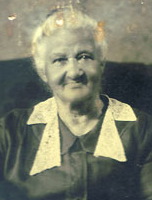
THE ALLEN-BREAUX PAGES
ALLENDOM
A Brief, Unfinished History Of The Allen-Breaux Family Written For The 1990 Allen Family Reunion
© 1990
Betty Charbonnet Reid Soskin
Ruth Romine Warnie Strange
Cover of the 1990 Allen Family Reunion Booklet
Introduction
By Betty Reid Soskin 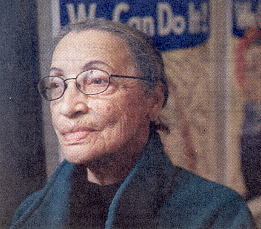
When Cousin Ruth called
to ask if I would be willing to help with this family project, I leapt at the chance.
Had often dreamed of just such an undertaking. Here was the chance to join in a work
in progress since she had gathered much of the vital data and had located the important
sources of material.
You will need to keep in mind while reading, that what we have done is to simply
take the hard data and to draw inferences that seemed most likely. This is the best
that one can do when material is as old as most of this is, and when we have only
the memories of senior relatives (now nearly a century-old) to use as confirmation.
And, like the proverbial blind men and the elephant, each has a subjective memory
of events at best.
However, it is the debate that this paper will initiate that holds the magic. "Oh
no, it didn't happen quite that way..." may be the onset of new discoveries that
will enrich the legends. Therefore we do invite everyone to add on and alter as each
begins to draw their own inferences from the data we've appended. It is in this way
that we can together begin to lay the foundations of a true historical document that
will hold together for future members of the Allen Clan.
I would love to get everyone to submit whatever memories have been collected over
the years. It will be like the creation of a verbal patchwork quilt with each of
us adding our particular shapes and colors to the whole.
These, then, are the shapes and colors of our pieces written in the hope that
you will join with us in the "quilting."
Preface
If we accept the premise that understanding and critical analyses of world and national history are essential to the building of a constructive future for all of humankind, it would naturally follow that ethnic and family history must be given equal scrutiny. Together, we can rebuild the cultural underpinnings of ourselves as African/Americans while engaging in one of the most fascinating searches imaginable.
The Allen family history proves that many generations of very strong
people dared to cross over a host of unimportant lines in the never-ending quest
for love, adventure and achievement. What a great heritage! What a beautiful polyglot
these Allens be! Our very existence proves the irrelevancy of race as the determining
factor of anything -- an illusion at
best.
Unfortunately, we live in a time when -- for
political reasons -- we must choose carefully the edge we use in facing a
world filled with racial hatred. Our times demands an unwavering allegiance to our
African roots.
To the great African stock which created our earliest
traceable ancestor-in-common, Celestine, has been added (over many generations) European
ancestry (i.e., French, English, Spanish, Portuguese, German); many Native American
tribal unions; and, in more recent times, various Asian bloodlines. Added to these
would be a number of Jewish/Black unions. Given the many ethnic and cultural mixtures
in many Jews, and add to that most African/American racial blends, and the entire
question of race becomes moot.
To the extent that our family history is indistinguishable from that of most other
African/American families, we together share and enrich the cultural base of the
entire country.
Hopefully, each of us will consider this as only
the beginning of a process of rediscovery and will use the attached documents to
deepen the search for "Allendom".
How It All Began
Ruth
Warnie Romine Strange (daughter of Joseph Warnie and Marie Isabelle Allen; daughter
of George Allen, Sr.*, and Marie Leontine Braud who was the daughter of Celestine
(slave of Edouard Braud, Sr.) and Rosalie Cloátre; daughter of one Draizín
Cloátre, all of St. James Parish, Louisiana, called to say that she had collected
a host of names, relationships, family gossip and idle rumor over several years in
an effort to piece together the Saga of Allendom. She had recently added to this
material copies of the legal documents gleaned from the genealogical records of the
Archives of the Mormon Stake Library in Oakland, California. (Ed.; I can now be entered
in the Guinness Book of Records for having written this day the longest, grammatically
correct couple of sentences in the English language!)
Ruth now added to this melange the relevant church papers from the Archives of the
Diocese of Baton Rouge, bringing on the very real threat of terminal confusion!
Enter...
Two
years after the fact I, Betty Charbonnet Reid Soskin (daughter of Dorson Louis Charbonnet
and Lottie Estelle Allen; daughter of Minétte LaRose and George Allen (Jr.
or "III"?) who was the son of Marie Leontine "Mamma" Braud, etc., joined the search
for clarification.
Calling on skills learned from my late university/professor/research psychologist/scientist
husband, Bill Soskin, I set forth a hypothesis with the full intention of making
every effort to disprove it -- and having failed to do so -- to offer here
what we truly believe is the story of the Allen family.
As in any good scientific experiment, it is the duty of all who follow to work to
replace what temporary truths we've uncovered and to offer more exact findings of
their own. This, then (in the tradition of good science) is the job of younger Allens
and Allens yet unborn.
For now, the combined curiosity and zeal of Ruth and I have produced some interesting
speculations as carefully constructed from the aforementioned documents. We recently
added to that work new information gathered in a visit to the National Archives at
the Golden Gate National Cemetery in San Francisco. It was there that we were able
to pour over the microfilmed Slave Census documents for the years of 1830 and beyond.
Fascinating! We've also sent for Marie Leontine's military pension records from Washington,
D.C., and will have them on hand for some future Allen historian to work with.
What Was St. James Parish Like In Those Times?
Though it was possible to view only a few of the available microfilms of the period, given the time we had to spend, our trip to the Archives only served to pique my curiosity. However we did get a sense of St. James from the slave census data.
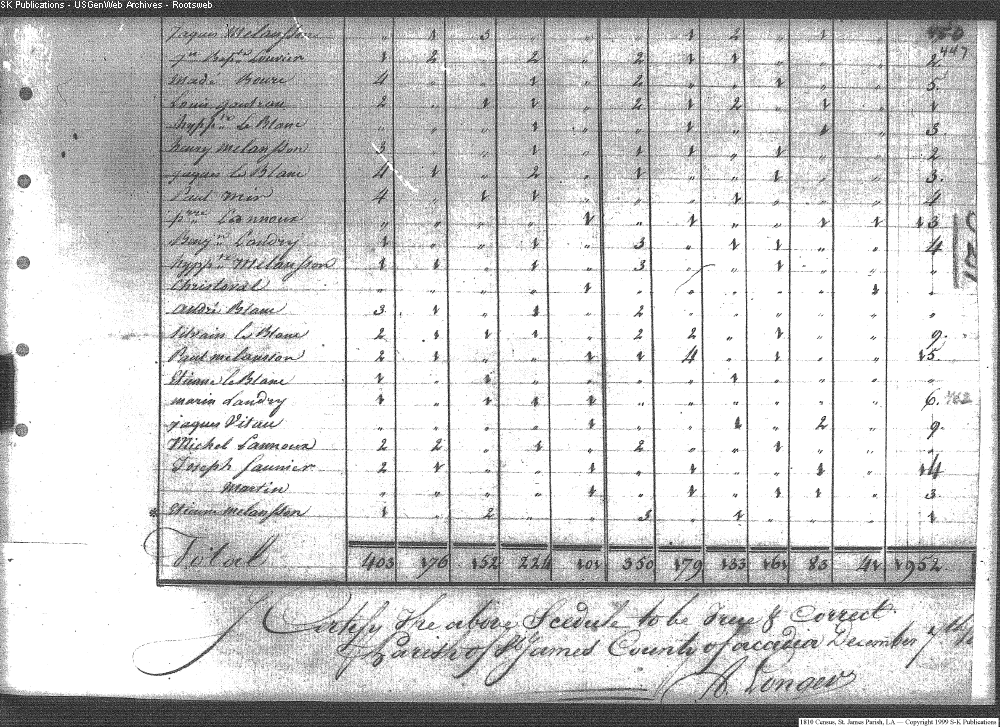
Page from the 1810 United States Census of St. James Parish
From the size of the 1830 microfilm it is clear that the area was only sparsely populated
at the time. There seemed to be no more than a few large plantations.
In the census of 1830 there is a listing entitled "Head of Households" which list
one Augustine Braud. His family numbers 10 though only the names of 3 family members
are listed individually; Alexis, a two-year-old; Rosamond, 8 years-old and Marcellin,
aged 9. This may mean that these were the only purely French members of his
family. Had we gone back to 1820, we may have found other entries for the surname.
At that time, non-white family members would have been counted as chattel, only.
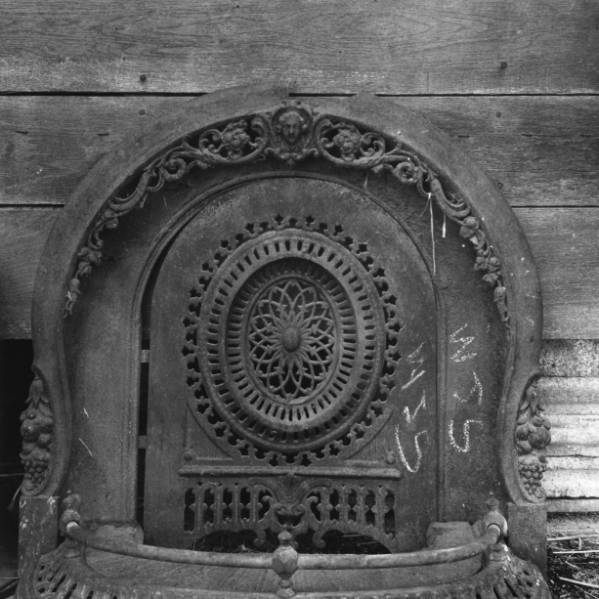
Fireplace from Uncle Sam Plantation, Convent, Louisiana (St. James Parish)
Twenty Years Later...
In
the census of 1850 we find quite a different picture of the settlement. By that time
the population figures were:
Whites 1,677 males
1,588 females
3,265 free persons
Slaves 3,375 males
4,377 females
7,751 slaves
It is interesting to note that the white males outnumbered the females. Among the
slaves the opposite is true (by design?).
It is probably safe to assume that the mulattos were children of the slave owner
fathers and sons. But, it is interesting to note that in the same count there is
a confusing category called "Coloreds" given as
Males 26
Females 36
though a separate category seems strangely redundant. One explanation may be that
these individuals were conceived through unions between Africans and Native Americans.
It came as a surprise to me that there were Indian slaves in the Southern States,
certainly in the Louisiana census (though unnamed by race, and only mentioned in
narrative). Something for some future Allen sleuth to contemplate, right?
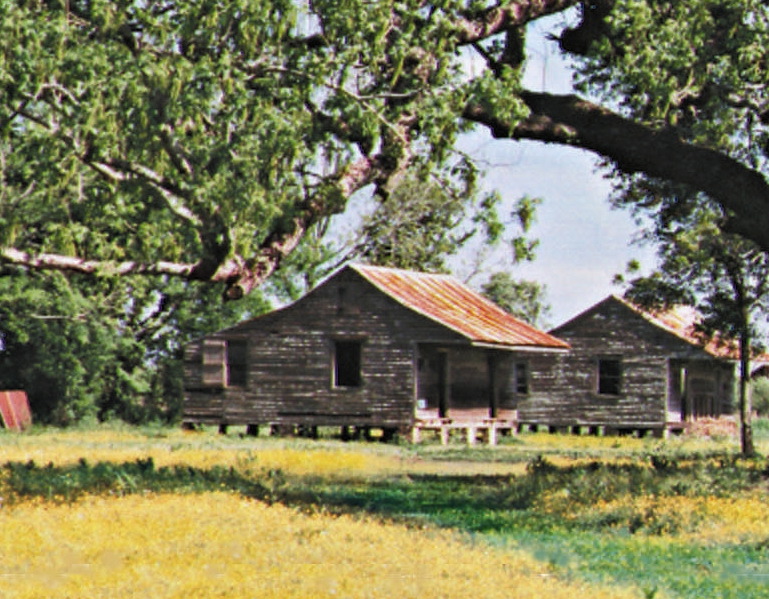
Slave cabins from the Laurel Plantation, Vacherie, Louisiana (St. James Parish)
Breaux Family Early History...
In
closer examination of the relevant pages from the ledger Extract From 1850 Census, (Microfilm Reel #239, 7/30/1850) one finds clear evidence that the heads
of households are five brothers Edward (Sr.), Farmer, aged 57; Marcel, Workman, aged
55; Joachim, aged 42; Emile, aged 31; a cousin (perhaps) Emile who was 29; and an
unmarried brother named Oscar who was 19.
It is clear from the headings giving age, sex, color, occupation, etc., that
Marcel's family was "white" as were those of the two Emiles. Since the heavy lines denote "households", it is fairly certain that we're talking about five such households with young Oscar "out there" on his own.
Our family, that of Edouard and Rosalie (apparently named after her mother)
are obviously influenced by that of younger brother, Joachim. If you will note, in
the "color" column, his wife, Marie, is a 35-year-old Mulatto woman (M) and that
their large family is all listed with an "M" which signifies racial mixture. They
were obviously married and not simply co-habiting since the census shows that they
carry the same surname.
It is also quite clear that there was apparently no stigma attached to their skin
color since family names are quite evident in the children of the next generation.
It is fair guess that this was a close family with Joachim and Marie a major influence
in that they set the example that was later followed by our own Edouard who later
married the slave, Celestine. The continued closeness of the Braud family is evidenced
by the fact that many of our great aunts and uncles carry all of part of the names
of Joachim and Marie's children.
Among those names are, Camille, Marie,
Marie Louise, Albert and Louise. The names Marie and Louise are carried as first
or middle names for many of Mum's daughters. Mamma must have known and loved her aunt,
Marie, having given three daughters the name. Celestine, our slave ancestor, named
her only son, Theophile, for the son of Marie and Joachim.
Oscar and Valcour are brothers, sons of Oscar Braud and Ophelia Arseneaux. This,
according to their marriage records (see appendix) when they were married one year
apart in February of 1878 and 1879. If you will examine the archival records of the
Diocese (appendix) you will find that Valcour is listed as godfather ("sp") of our
Ruth's mother, Marie Isabelle Allen.
Eduoard and Rosalie Braud, Sr.
An
interesting sidelight was the notation on Draizín Cloátre, whom we
know to be the father of Edouard's wife, Rosalie. The census of 1850 lists him as
owning a single slave, a nine-year-old mulatto boy. Makes one wonder if this weren't
his own son which would mean that Rosalie might well have been raised with a half-brother
of color.
Eduoard, (Edward, etc.) is the eldest of the family and apparently the head of the
plantation upon which they all lived. At least, they seemed to have shared the land
with Eduoard being listed as "Farmer" and his oldest son, Silvanie, as "Overseer."
Edouard, Jr.
Our
ancestor, Edouard, Jr. was the second-born son of Eduoard and was 24 at the time
of the 1850 census. This means that he was already the lover of our slave ancestor,
Celestine and the father of our Marie Leontine (Mamma) who was born in 1846. She
was four at the time of this census but was not accounted for but may well have been
hidden, or was counted in with her mother, Celestine, with the slave population.
One can only speculate.
It appears from the census profile on St. James Parish that there were many large
plantations which owned several hundred slaves. The BRAUD (BRAU, BREAUX) appears
not to have been one of these, but rather was one of relatively modest proportions;
middle class by today's standards. They owned a slave staff of 57 persons. This would
have been the household of the elder Breaux and his extended family.
I have always believed that the slave master who fathered our ancestor, Celestine,
was that typical older man who exploited his female black slaves. The very word,
"slave master" conjures up images of rape and sexual subjugation.
To the contrary, the younger Eduoard and his Celestine were lovers in a long-standing
relationship which covered several decades. I've been told by my Aunt Vivian (daughter
of George Allen, Jr.) that Celestine and her daughter, our Mamma lived in the big
house and cooked and delivered meals to the slaves who worked the fields. Vivian
remembers such stories from her own childhood in St. James. Celestine and Eduoard
lived together on the plantation for over a twenty year period preceding the Civil
War.
This is also supported by the fact that Leontine's birth and christening took place
in the year 1846, almost twenty years before the signing of the Emancipation Proclamation;
hardly signs of a casual relationship.
According to church documents (See Daigre letter), Edouard married Celestine at the
point where freedom occurred. The Emancipation Proclamation dates to the year 1865
as does their marriage; a marriage which was performed in order to legitimize their
two year-old son, Theophile. (Is this child the brother Mamma spoke of as "Ro-bair";
the Robert who was lynched in his youth?)
Our Mamma seems to have enjoyed a "family" relationship with Edouard which provided
both support and protection. There is no evidence that she bore children prior to
her marriage to George in 1869-70. Both Mamma and her younger sister, Nonanne, seemed
to have enjoyed freedom from sexual exploitation common in the experience of women
of their circumstance.
There is ample evidence that Catholicism played an important role in the social behavior
of the Breaux family. Records of their marriages and baptisms provide an impressive
road to follow through the years of their lives.
Have never given it much thought, but this work is teaching this Allen that the values
of institutionalized religion go far beyond individual belief systems. Cultural roots
weighed against intellectual integrity carry more power than I would have imagined.
Makes me want to go back to reexamine...
Edouard seems to disappear from the Census records before 1870, there is the possibility
that he died of natural causes. Have turned up nothing about his military record,
but would assume that his role in the War will turn up in a search of the National
Archives which are not available on the West Coast and will have to wait for a trip
to either Salt Lake City or the Nation's Capitol.
CELESTINE
"Parents
unknown," she springs upon the world a totally independent being. She may well have
been the child of African-born slave parents from whom she was separated through
sale or trade at a tender age. It was common practice in that cruel chapter in our
country's history to separate slave families in order to produce greater allegiance
to and dependence upon the host family and its enterprise.
Aunt Vivian describes Celestine ("Mom") as always walking with a long pole, much
in the fashion of the women of Africa (Masai?). My mother, Lottie, speaks of her
as being "brown skinned with nice, puffy hair." This suggests that Celestine may
well have been the daughter of an African/Indian mixture, one numbered among those
described as "Coloreds." Later generations certainly display signs of the physical
characteristics of Native Americans.
There is every indication that she was a house servant who lived in close relationship
with the Breaux family. The fact that she raised three children in slavery times
but apparently not as slaves suggests that those children were raised in a relatively
intact family constellation headed by their father, Edouard.
My mother, Lottie, remembers that Celestine's second
born daughter, Dora (known as Nonanne), spoke beautiful French and could read may
well have been the genesis of Mum's daughter, Marie Alice's, insatiable appetite for
learning which led her to become St. James' leading educator and the founder of the
first school for blacks in the community. Aunt Alice was the first in a long line
of Allen educators -- many who began with the simple requirements of "a high school
diploma and two years' Teachers Normal" has evolved to many with advanced degrees
and at least one Board of Regents Chairman, Dr. George L. Allen of Texas Southern
University; a contemporary and friend of Justice Thurgood Marshall.
But I digress . . .
Celestine
and Edouard's firstborn, Leontine, arrived in February of 1846. Dora was born two
years later (birth date could not be confirmed). Their third child, already mentioned,
followed when Mamma was about 17-years-old. Makes one wonder by what method these
children were spaced. Why were there not many children? Could there have been others
about whom we know nothing?
Celestine's relationship with and dedication to Eduoard endured over the span of
twenty years. Their love seems to have ended only at his death.
Sometime after Edouard dropped out of her life, Celestine (married?) Mr. Orthaire
Jean Baptiste for whom she bore Gloria (Tante Glau) Celine (Tante Celine) and a third
daughter, Georgeanne, who died as a young woman without having produced a child.
Tante Glau (as Mrs. Commanîe) gave birth to four children; one daughter, Viny,
and three sons; Marcel, Sherman and Trasimon.